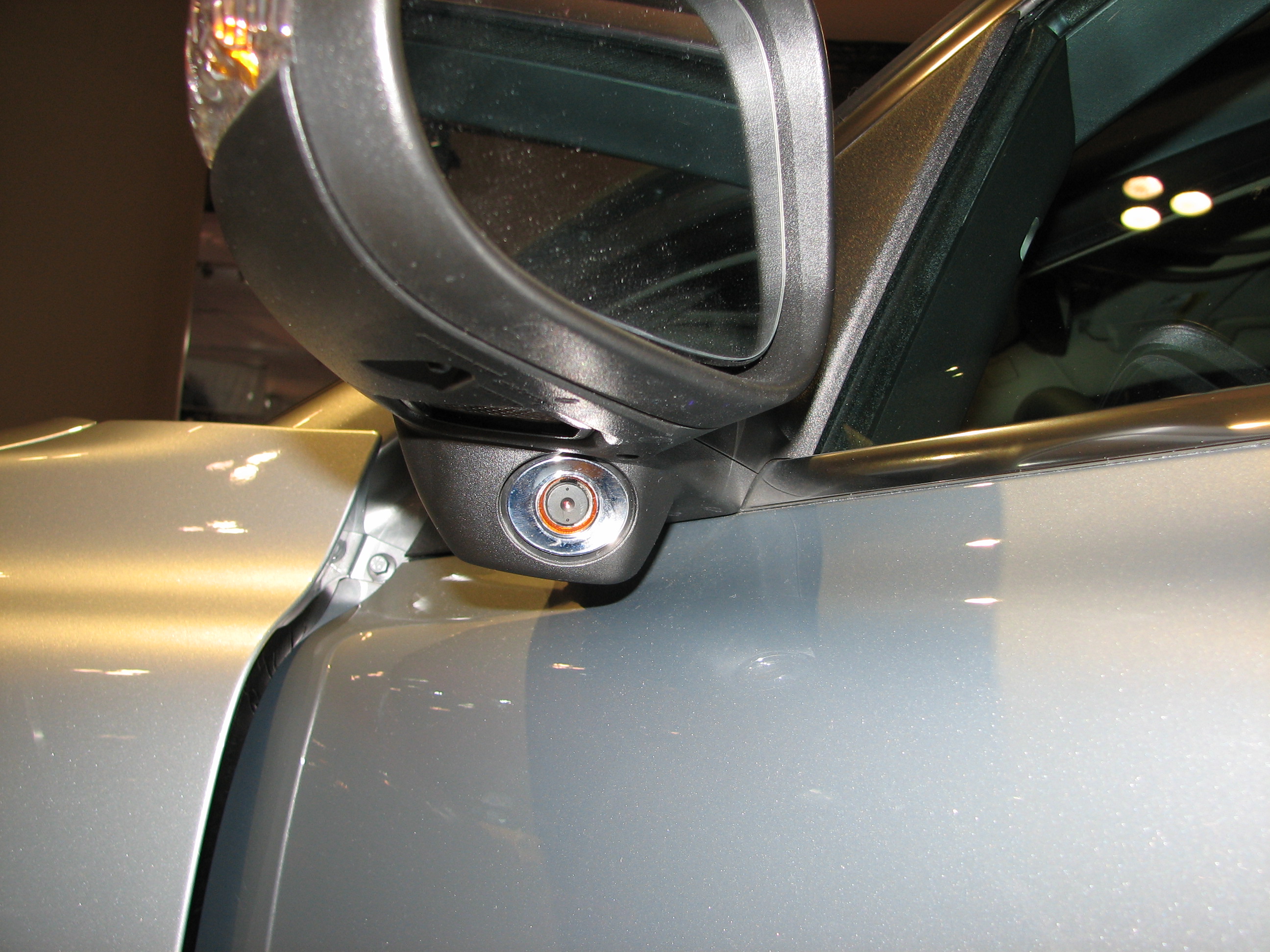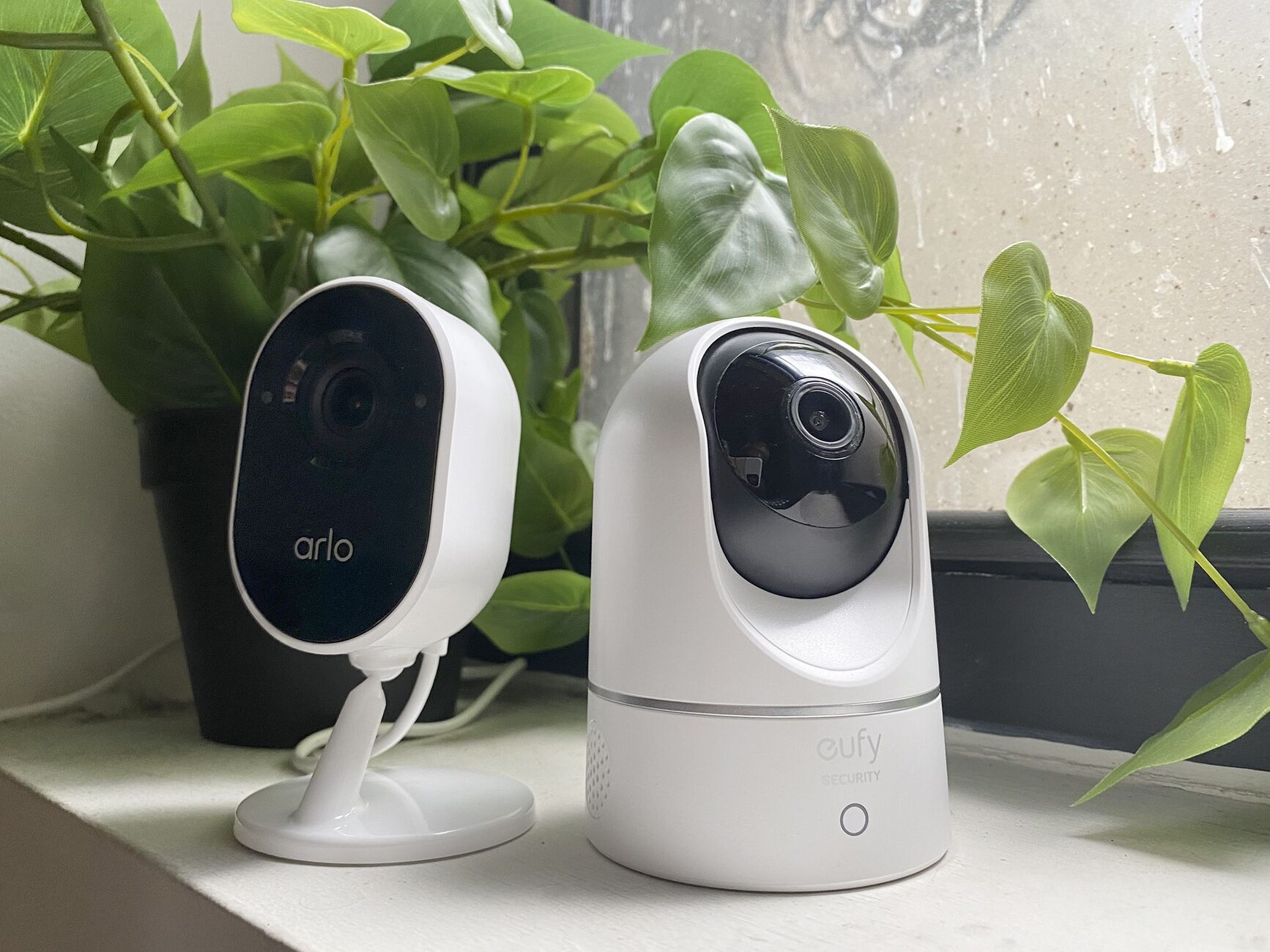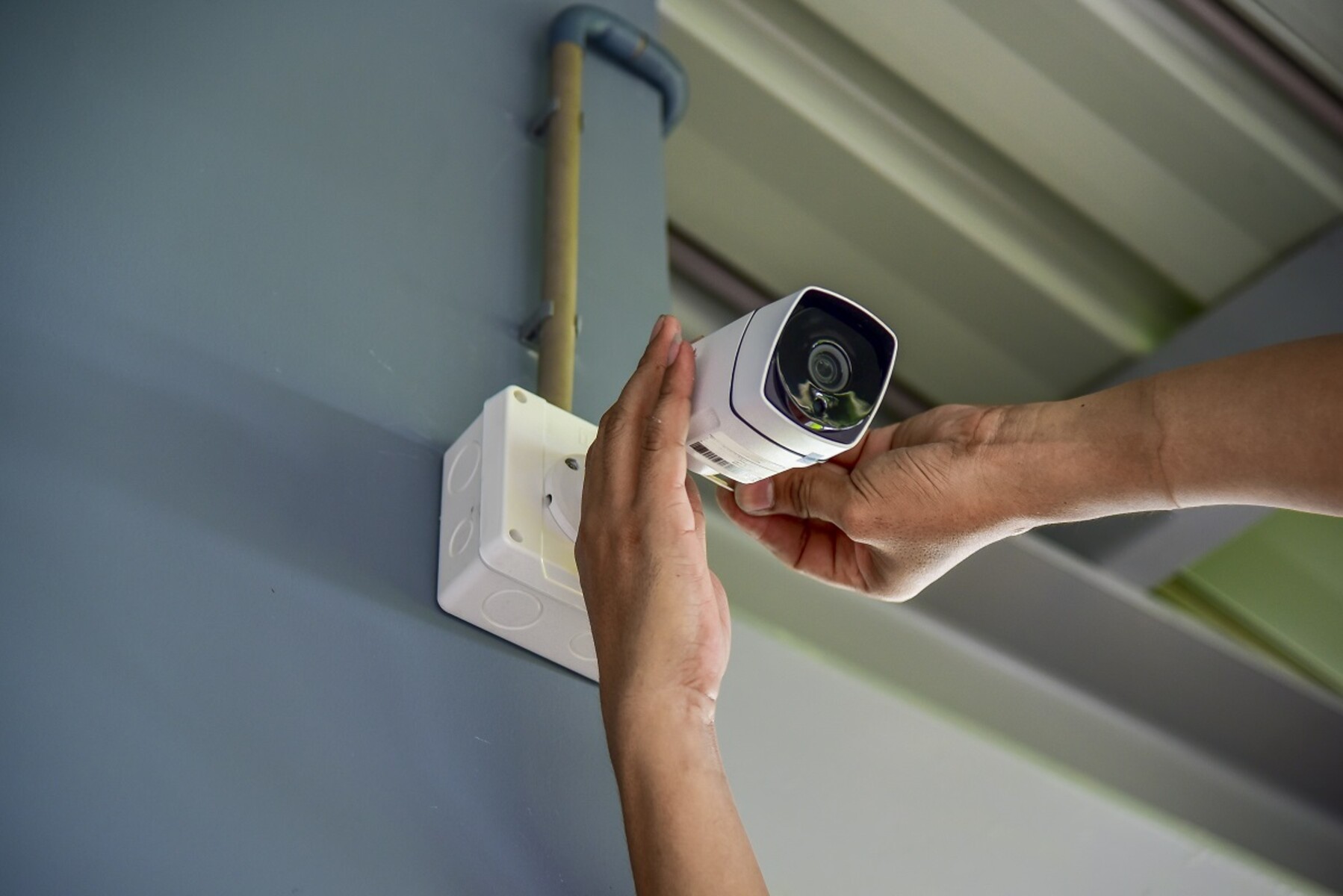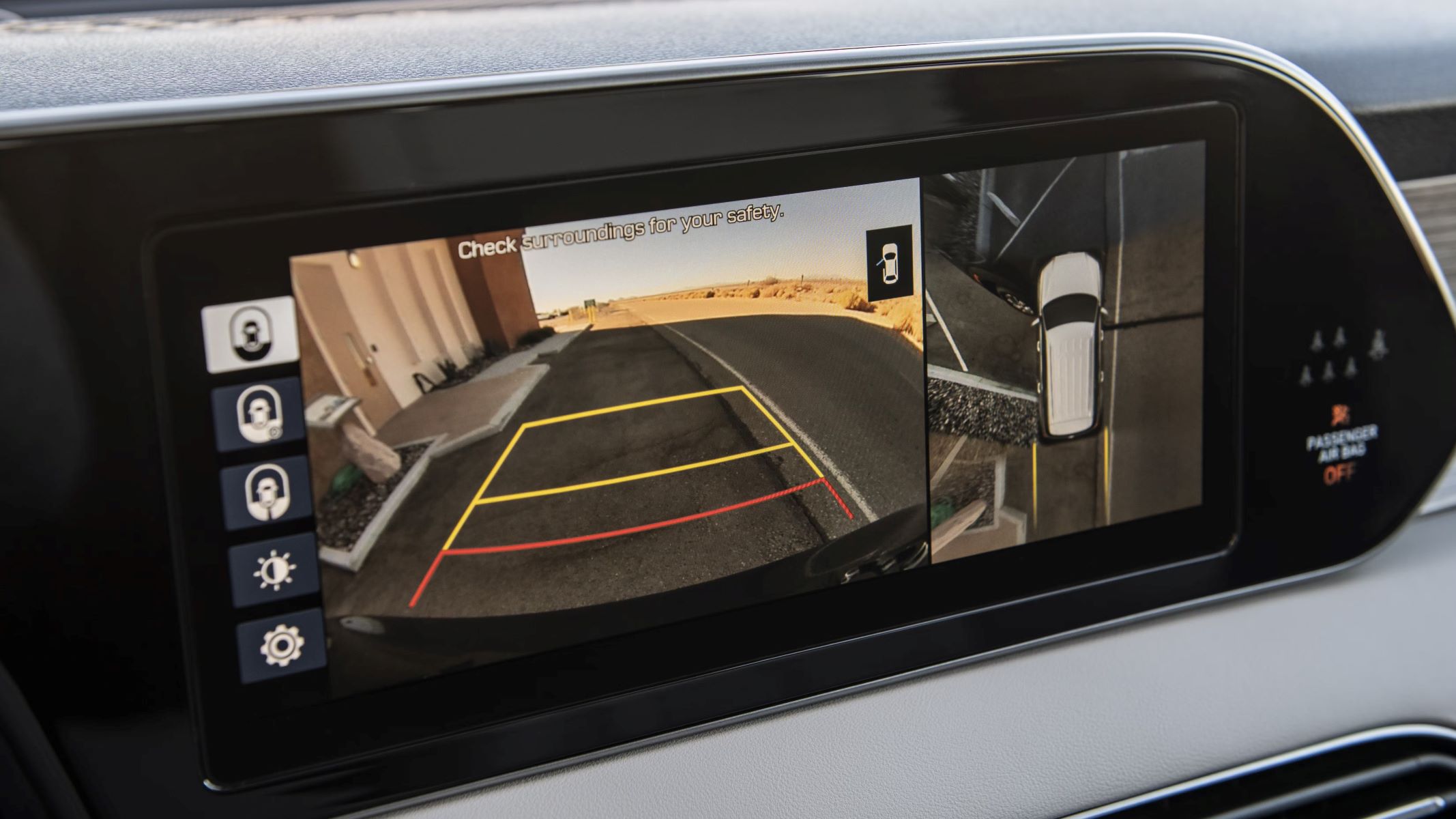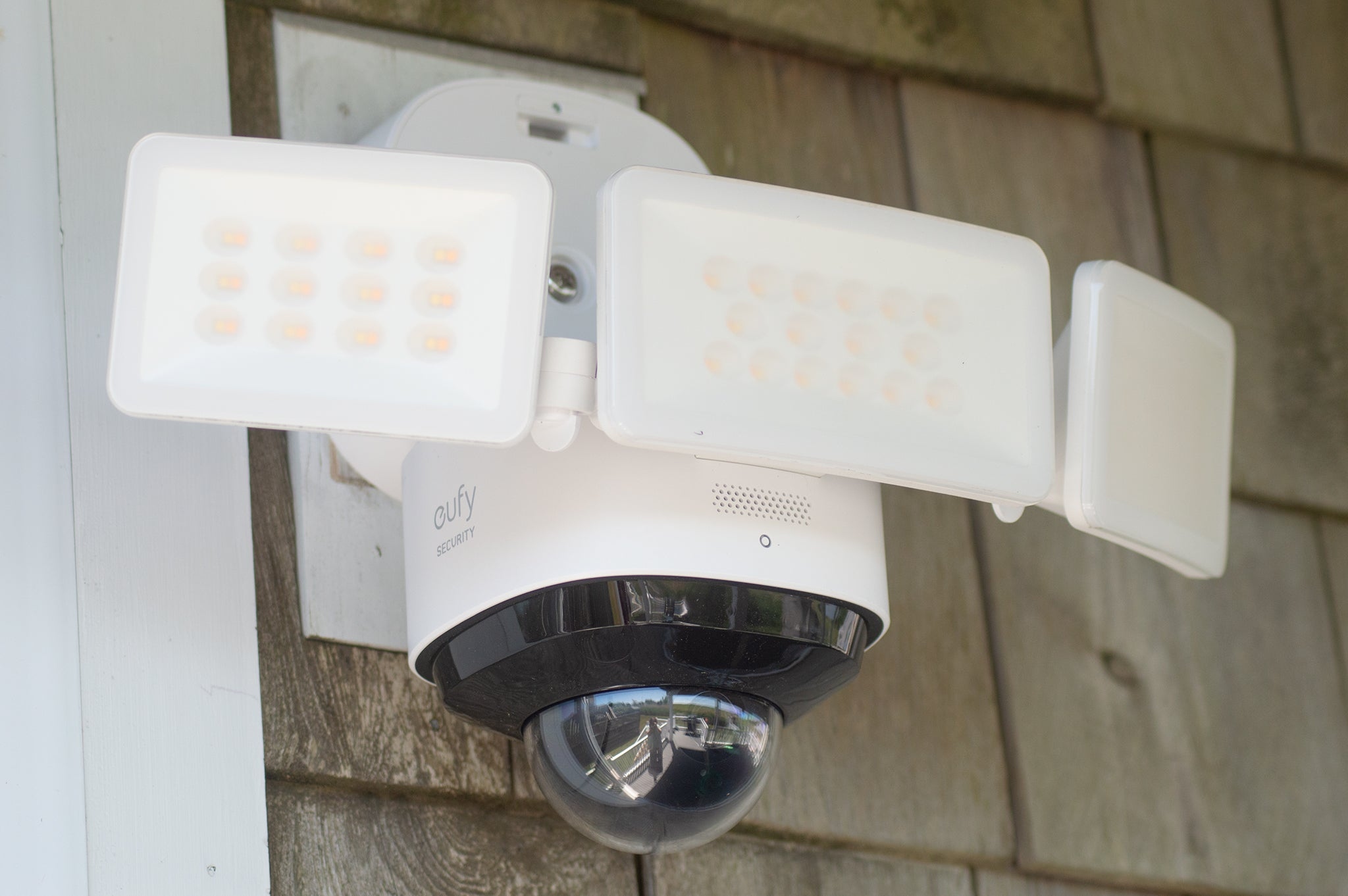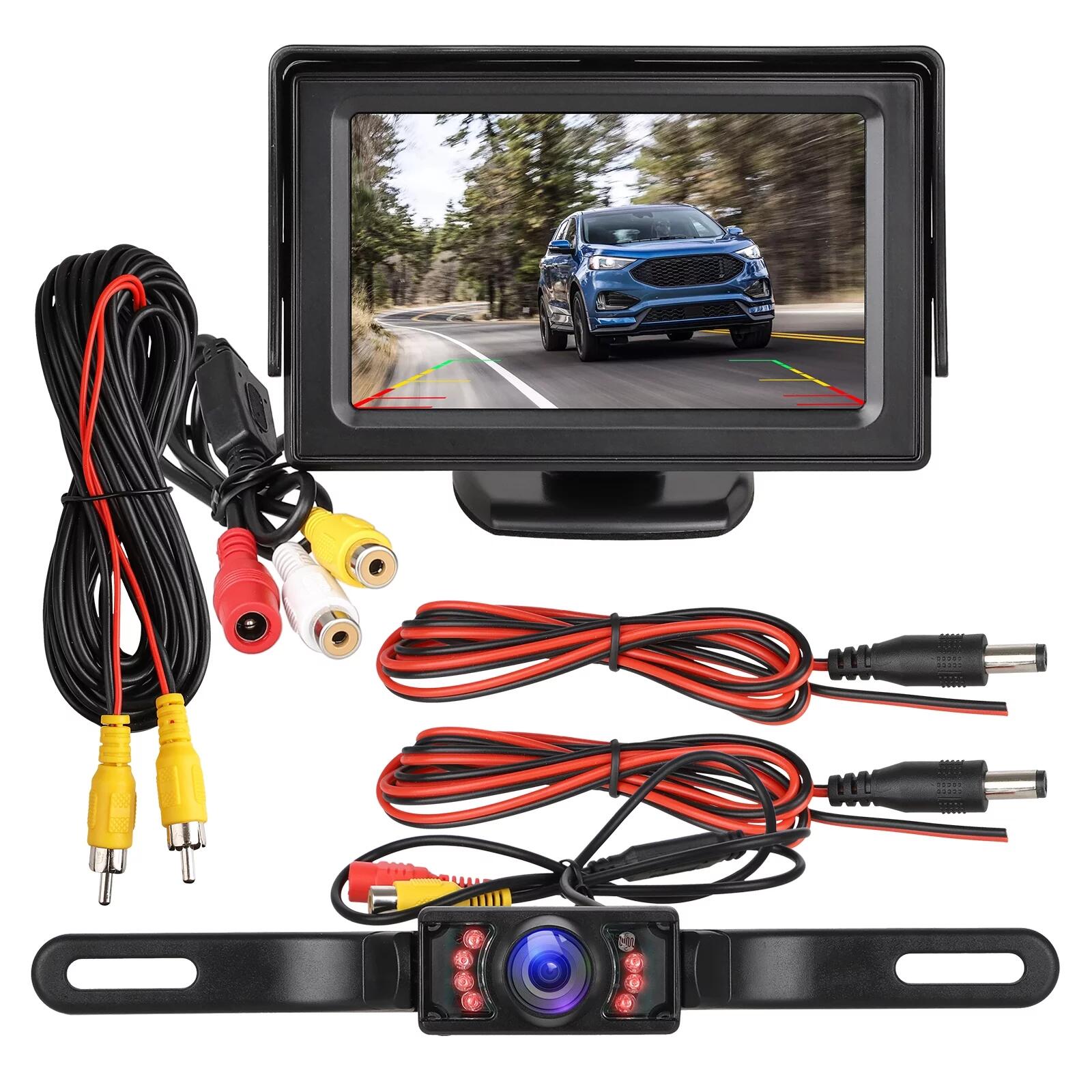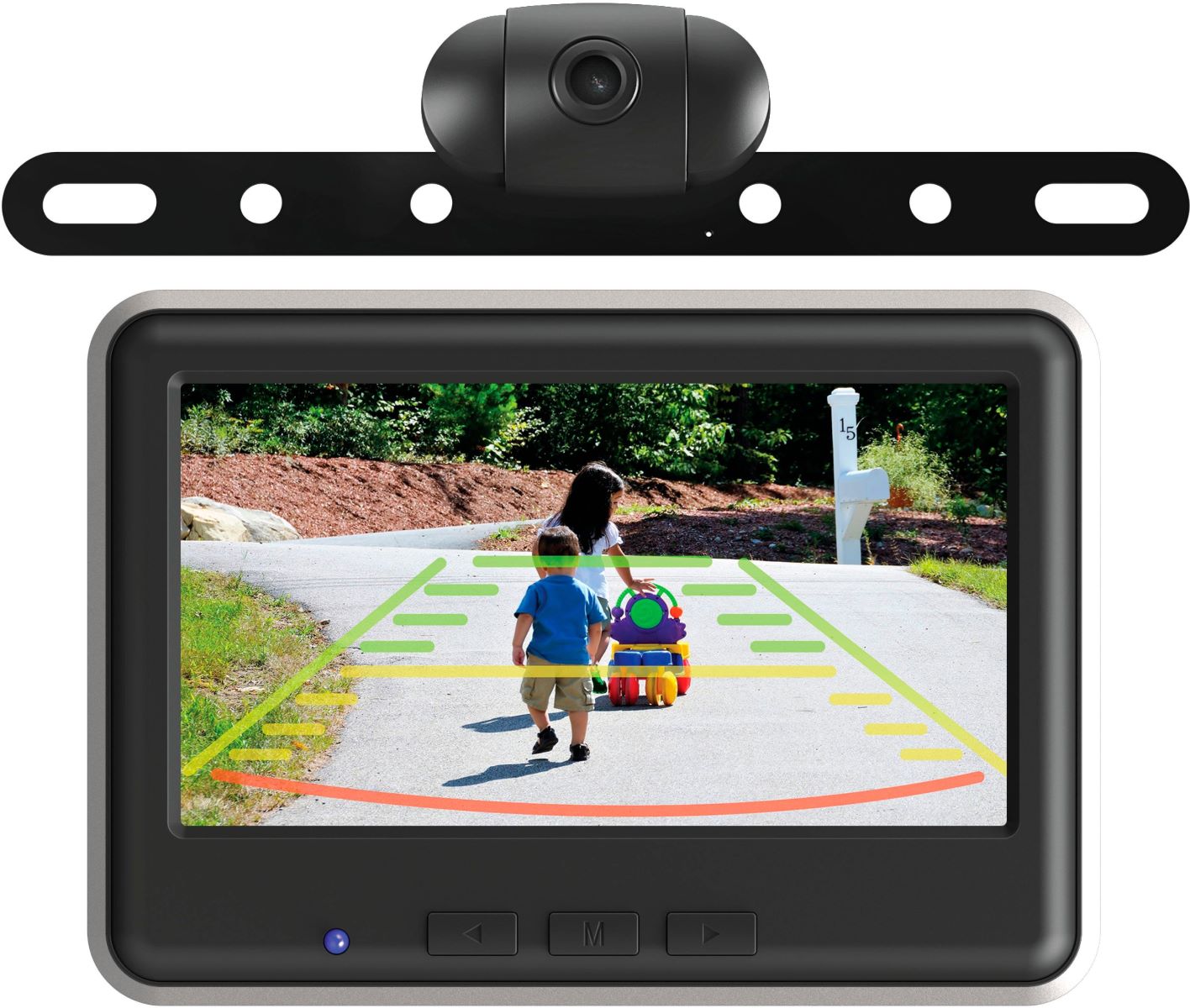Introduction
Welcome to our comprehensive guide on blind spot monitors! In this article, we will explore everything you need to know about this innovative technology that has become a vital safety feature in modern vehicles.
The roads can be a dangerous place, with potential hazards lurking in unexpected places. One such hazard is the blind spot – an area around the vehicle that the driver cannot see directly through the rearview or side mirrors. Changing lanes or making turns without proper visibility of the blind spot can lead to accidents and collisions.
That’s where a blind spot monitor comes in. This advanced technology is designed to fill in the visibility gaps and provide drivers with additional assistance in identifying potential risks in their blind spots. By detecting and alerting drivers to the presence of vehicles or objects in their blind spots, blind spot monitors significantly reduce the chances of accidents and enhance overall road safety.
In this article, we will delve into the functionality of blind spot monitors, discuss their benefits and limitations, and provide useful tips on how to use them safely. We will also highlight the key differences between blind spot monitors and rearview cameras, as well as explore their availability in different car brands.
Whether you’re a seasoned driver looking to upgrade your vehicle or a new driver seeking to understand the latest safety features, this guide will equip you with the knowledge to navigate the road with confidence and peace of mind. So, let’s dive in and explore the fascinating world of blind spot monitors!
What is Blind Spot Monitor?
A blind spot monitor is an advanced safety feature integrated into modern vehicles to help drivers detect and be alerted to the presence of vehicles or objects in their blind spots. Blind spots are areas around the vehicle that are not visible to the driver through the rearview mirror or side mirrors.
The blind spot monitoring system utilizes sensors, cameras, and radar technology to monitor the space alongside and behind the vehicle. These sensors scan the adjacent lanes and detect any vehicles that may be in the driver’s blind spots. Once a vehicle is detected, the blind spot monitor provides visual or audible alerts to notify the driver.
This technology is especially useful during highway driving and lane changes, as it enhances the driver’s awareness of other vehicles in close proximity. By giving drivers an extra set of eyes, blind spot monitors help prevent accidents caused by sudden lane changes or merging into lanes with already occupied space.
Blind spot monitors can vary in terms of the level of sophistication and available features. Some systems provide simple visual alerts in the side mirrors when a vehicle is detected, while others may also include haptic feedback, such as steering wheel vibration, to further grab the driver’s attention.
Furthermore, some blind spot monitors are integrated with other safety features, such as lane departure warning systems. These integrated systems work together to provide an enhanced safety experience, ensuring drivers stay in their lanes and are mindful of potential blind spot risks simultaneously.
Overall, blind spot monitors are a valuable technology that significantly improves driver safety and reduces the risk of accidents while on the road. By providing drivers with real-time information about vehicles in their blind spots, blind spot monitors offer an added layer of protection and peace of mind.
How Does Blind Spot Monitor Work?
Blind spot monitors rely on a combination of sensors, cameras, and radar technology to detect and alert drivers to vehicles or objects in their blind spots. The specific workings may vary slightly between different vehicle models and manufacturers, but the general process remains the same.
Most blind spot monitoring systems use radar sensors mounted on the sides or rear of the vehicle. These sensors emit radio waves that bounce off surrounding objects, including other vehicles. The radar sensors then measure the time it takes for the waves to return, allowing them to calculate the proximity and relative speed of nearby vehicles.
When the blind spot monitor detects a vehicle in the blind spot, it sends a signal to the driver through visual and audible alerts. Common visual alerts include illuminated icons or symbols in the side mirrors or the dashboard. Audible alerts may come in the form of beeping sounds or chimes.
Some advanced blind spot monitoring systems also incorporate camera technology. Cameras installed in side mirrors or the rear of the vehicle capture real-time video footage of the surrounding areas. This footage is processed by computer algorithms that analyze the images and identify potential hazards in the blind spots. When a vehicle is detected, the system alerts the driver through visual and audible cues.
It’s important to note that blind spot monitors are designed to complement, not replace, the traditional mirror-checking and shoulder-checking techniques. They serve as an additional safety tool to enhance driver awareness and minimize the risk of accidents caused by blind spot-related issues.
Furthermore, the settings and sensitivity of blind spot monitors can often be customized by the driver. This allows drivers to adjust the detection range and level of alerts based on their preferences and driving conditions.
Overall, blind spot monitors utilize a combination of radar sensors and cameras to detect vehicles or objects in the blind spots of the vehicle. By providing timely alerts to the driver, these systems help improve situational awareness and reduce the potential for accidents caused by blind spot-related issues.
Benefits of Blind Spot Monitor
Blind spot monitors offer a range of benefits that contribute to improved driver safety and peace of mind on the road. Let’s explore some of the key advantages of using a blind spot monitor:
- Enhanced Visibility: The primary benefit of a blind spot monitor is improved visibility of the surrounding traffic, particularly in the areas that are not visible through the rearview or side mirrors. By giving drivers real-time alerts about vehicles in their blind spots, blind spot monitors help eliminate the guesswork and provide a clearer picture of the traffic situation.
- Reduced Risk of Accidents: Blind spot-related accidents, such as collisions when changing lanes or merging, can be significantly reduced with the use of a blind spot monitor. By providing timely alerts and warnings, these systems help drivers make informed decisions and take necessary precautions to avoid potential accidents.
- Increased Driver Confidence: Blind spot monitors can increase driver confidence and reduce anxiety, especially for those who are less experienced or have difficulty with traditional blind spot checks. With the added assurance of the blind spot monitor, drivers can navigate lanes and make turns with greater peace of mind.
- Minimized Human Error: Even the most diligent drivers can overlook a vehicle in their blind spots. Blind spot monitors act as an extra set of eyes, eliminating the risk of human error and ensuring drivers have a comprehensive view of their surroundings.
- Improved Lane Change Safety: Changing lanes is a common maneuver that can be fraught with danger if not executed with caution. Blind spot monitors provide crucial information about vehicles approaching from behind, making lane changes safer and more confident.
- Integration with Other Safety Systems: Many blind spot monitor systems are integrated with other safety features, such as lane departure warning and rear cross-traffic alert systems. This integration creates a more comprehensive safety network, offering drivers a holistic view of their surroundings and potential risks.
- Valuable Assistance in Heavy Traffic: Blind spot monitors are particularly beneficial in heavy traffic situations, where vehicles frequently change lanes and maneuver in close proximity. By providing continuous monitoring and alerts, blind spot monitors help drivers navigate through traffic more smoothly and avoid potential collisions.
The benefits of blind spot monitors are clear. These systems enhance visibility, reduce the risk of accidents, increase driver confidence, minimize human error, improve lane change safety, and provide valuable assistance in heavy traffic situations. With the installation of a blind spot monitor, drivers can enjoy safer and more confident journeys on the road.
Common Features of Blind Spot Monitor
Blind spot monitors come with a range of features designed to enhance the functionality and effectiveness of the system. While specific features may vary between different vehicle models and manufacturers, there are some common features that you can expect to find in most blind spot monitoring systems. Here are a few of them:
- Visual Alerts: One of the primary features of blind spot monitors is the provision of visual alerts. These alerts are typically displayed on the side mirrors or the dashboard, informing the driver about the presence of vehicles in the blind spots. The visual alerts may take the form of illuminated icons, symbols, or LED indicators to attract the driver’s attention.
- Audible Alerts: In addition to visual alerts, blind spot monitors often include audible alerts. These alerts are typically in the form of beeping sounds or chimes that can be heard by the driver. Audible alerts provide an extra layer of warning and ensure that drivers are alerted even if they are not actively looking at the visual indicators.
- Haptic Feedback: Some advanced blind spot monitoring systems incorporate haptic feedback, such as steering wheel vibration, to grab the driver’s attention. This tactile feedback provides a more immediate and noticeable warning, further enhancing the driver’s ability to respond to potential risks in the blind spots.
- Adjustable Sensitivity: Many blind spot monitors allow drivers to adjust the sensitivity of the system based on their preferences and driving conditions. This flexibility allows drivers to customize the detection range and alert thresholds to match their comfort levels and specific needs.
- Lane Change Assistance: Some blind spot monitoring systems offer additional assistance during lane changes. This feature may include active guidance, where the system provides steering input or resistance to help the driver stay within the lane and avoid collisions with vehicles in the blind spots.
- Rear Cross-Traffic Alert: Many blind spot monitors are integrated with rear cross-traffic alert systems. These systems use sensors and cameras to detect approaching vehicles when the car is in reverse. By providing warnings about vehicles approaching from the sides, blind spot monitors with rear cross-traffic alert enhance safety during parking and backing out of parking spaces.
- Intelligent Monitoring: Advanced blind spot monitors incorporate intelligent monitoring algorithms that differentiate between vehicles and other objects. This helps to minimize false alarms and provide more accurate alerts, ensuring that drivers are alerted only when there is a potential risk in the blind spots.
These are some of the common features you can find in blind spot monitoring systems. The combination of visual alerts, audible alerts, haptic feedback, adjustable sensitivity, lane change assistance, rear cross-traffic alert, and intelligent monitoring makes blind spot monitors highly effective in enhancing driver awareness and reducing the risks associated with blind spots.
Limitations of Blind Spot Monitor
While blind spot monitors are a valuable safety feature, it’s important to be aware of their limitations and understand that they are not without drawbacks. Here are some of the common limitations of blind spot monitors:
- Partial Coverage: Blind spot monitoring systems are designed to cover the immediate areas alongside and behind the vehicle. However, they may not provide full coverage of the blind spot areas, especially in larger vehicles or with certain car designs. Drivers should still rely on mirror checks and shoulder checks to ensure complete awareness of their surroundings.
- Dependency on Proper Functioning: Blind spot monitors rely on sensors, cameras, and other technology to function properly. If any of these components become damaged or malfunction, the blind spot monitor may not work as intended. Regular maintenance and checking of the system’s functionality are essential to ensure reliable performance.
- Environmental Factors: Poor weather conditions, such as heavy rain, snow, fog, or dust, can affect the performance of blind spot monitors. Reduced visibility can hinder the system’s ability to detect vehicles in the blind spots accurately. Drivers should exercise extra caution and rely on traditional checks during adverse weather conditions.
- False Alarms: In some situations, blind spot monitors may generate false alarms, indicating the presence of a vehicle that doesn’t actually exist in the blind spot. This can be caused by factors such as road markings, stationary objects, or abrupt changes in traffic patterns. Drivers should remain attentive and verify the presence of a vehicle through visual checks before making any maneuvers.
- Directional Blind Spots: Blind spot monitors primarily focus on the lanes to the sides and behind the vehicle. However, they may not detect vehicles at certain angles or when they are rapidly approaching from different directions. Drivers should still exercise caution and be vigilant when changing lanes or merging in complex traffic situations.
- Over-Reliance and Complacency: While blind spot monitors are beneficial, drivers should not become overly reliant on them. It’s crucial to maintain good driving habits, including regular mirror checks, shoulder checks, and signaling. Over-reliance on the blind spot monitor can lead to complacency and a disregard for other critical safety precautions.
Understanding the limitations of blind spot monitors is essential to ensure their effective and safe use. While they greatly enhance driver awareness and safety, it’s still crucial to practice responsible driving habits and remain alert to the full range of potential blind spot risks.
Tips for Using Blind Spot Monitor Safely
When using a blind spot monitor, it’s important to maximize its effectiveness and ensure safe driving practices. Here are some tips to help you use a blind spot monitor safely:
- Know Your Blind Spots: Familiarize yourself with the blind spots of your vehicle. Understand the areas that may not be covered by the blind spot monitor and make it a habit to perform mirror checks and shoulder checks to ensure complete awareness.
- Keep the System Properly Maintained: Regularly check the functionality of your blind spot monitor system. Ensure that the sensors, cameras, and other components are clean and free from any obstructions. If you notice any malfunctions or unusual behavior, have the system inspected and repaired promptly.
- Pay Attention to Visual and Audible Alerts: Take the visual and audible alerts from the blind spot monitor seriously. When you receive an alert, carefully check your mirrors and glance over your shoulder to confirm the presence of a vehicle in your blind spot before changing lanes or making a maneuver.
- Be Mindful of False Alarms: While blind spot monitors are generally reliable, they may occasionally produce false alarms. Stay vigilant and verify the presence of a vehicle through visual checks before reacting to an alert.
- Use Turn Signals: Always use your turn signals when changing lanes or making maneuvers. Indicating your intentions helps to alert other drivers and enhances their awareness of your movements, reinforcing the effectiveness of the blind spot monitor system.
- Do Not Rely Solely on the Blind Spot Monitor: Remember that blind spot monitors are designed to supplement, not replace, traditional mirror checks and shoulder checks. Develop the habit of using all available means to ensure the safety of your lane changes and maneuvers.
- Maintain Safe Following Distances: Even with a blind spot monitor, it’s important to maintain appropriate following distances. This allows for adequate reaction time in case of sudden braking or unexpected maneuvers by the vehicle ahead.
- Stay Alert and Focused: Remain attentive and focused while driving, even with the added assistance of a blind spot monitor. Avoid distractions and keep your eyes on the road, constantly scanning your surroundings and monitoring other vehicles.
- Continue to Educate Yourself: Stay informed about the specific features and limitations of your blind spot monitor system. Read the vehicle manual, attend driver’s education courses, and seek ongoing education to ensure you stay up to date on the latest advancements and best practices.
By following these tips, you can optimize the use of your blind spot monitor and enhance overall safety on the road. Remember to remain proactive and responsible in your driving habits, using the blind spot monitor as a useful tool to supplement your own diligence and awareness.
Blind Spot Monitor vs. Rearview Camera: What’s the Difference?
While both blind spot monitors and rearview cameras are safety features designed to enhance driver visibility, they serve different purposes and have distinct functionalities. Here are the key differences between these two technologies:
Blind Spot Monitor:
A blind spot monitor is a system that primarily focuses on detecting vehicles or objects in the driver’s blind spots – the areas alongside and behind the vehicle that are not immediately visible through the rearview or side mirrors. It utilizes sensors, cameras, and radar technology to monitor these blind spot areas and provides visual and audible alerts to notify the driver of potential risks. The primary purpose of a blind spot monitor is to assist drivers in making safe lane changes and avoid collisions with vehicles in their blind spots during highway driving or merging maneuvers. Blind spot monitors are typically active systems that continuously monitor the surrounding areas while the vehicle is in motion.
Rearview Camera:
A rearview camera, on the other hand, is designed to provide a clear view of the area directly behind the vehicle. It uses a camera mounted at the rear of the vehicle to capture real-time images, which are displayed on a screen in the cabin. Rearview cameras are especially helpful in maneuvering the vehicle in tight spaces, such as parking lots or parallel parking on the street. The purpose of a rearview camera is to assist in avoiding collisions with objects or pedestrians that may not be visible through the rearview or side mirrors. It provides a wide-angle, high-resolution view of what is immediately behind the vehicle, aiding the driver in gauging distances and ensuring safe reversing.
While both technologies contribute to improved visibility and safety, the key difference lies in their respective focus and coverage areas. Blind spot monitors concentrate on the areas alongside and behind the vehicle, helping drivers navigate and change lanes safely. Rearview cameras, on the other hand, provide a direct view of the area immediately behind the vehicle, primarily assisting with parking and avoiding obstacles during reverse maneuvers.
It’s worth noting that many modern vehicles are equipped with both blind spot monitors and rearview cameras. This combination offers drivers a comprehensive safety package, providing a full view of the surrounding areas and minimizing blind spot risks as well as potential collisions during reversing or parking.
Overall, while blind spot monitors and rearview cameras share the objective of enhancing driver visibility, they differ in their specific functionality and coverage areas. Together, these technologies work harmoniously to provide drivers with a holistic view of their surroundings, significantly improving safety on the road.
Blind Spot Monitor in Different Car Brands
Blind spot monitors have become increasingly popular in modern vehicles, and many car manufacturers have integrated this advanced safety feature into their models. Here’s a look at how blind spot monitors are implemented across some notable car brands:
Toyota: Toyota offers blind spot monitoring systems under the name “Blind Spot Monitor” or “BSM” in many of their vehicles. These systems typically come with visual alerts in the side mirrors and may include additional features such as rear cross-traffic alert and lane change assist.
Honda: Honda utilizes blind spot monitoring technology in their vehicles and refers to it as “Honda LaneWatch” or “Blind Spot Information System.” Honda LaneWatch uses a camera mounted on the passenger-side mirror to provide a live video feed of the vehicle’s blind spot on the central display screen when the right turn signal is activated.
Ford: Ford vehicles often come equipped with blind spot monitoring systems known as “BLIS” (Blind Spot Information System). These systems use radar sensors to detect vehicles in the blind spots and provide visual alerts in the side mirrors. Some Ford models also include features like cross-traffic alert and enhanced active park assist.
BMW: BMW integrates blind spot monitoring technology into their vehicles, referred to as “Active Blind Spot Detection.” The system uses radar sensors to monitor the blind spots and provides visual alerts in the side mirrors. It is often included as part of the Driver Assistance Package and may also offer features like lane departure warning and rear cross-traffic alert.
Mercedes-Benz: Mercedes-Benz incorporates blind spot monitoring systems called “Blind Spot Assist” or “Active Blind Spot Assist” across many of their models. These systems use radar sensors to monitor the blind spots and provide visual alerts in the side mirrors. Mercedes-Benz blind spot monitoring is often part of the extensive suite of safety features that the brand offers.
Audi: Audi vehicles commonly feature blind spot monitoring systems called “Audi Side Assist” or “Audi Blind Spot Detection.” These systems utilize radar sensors to monitor the blind spots and provide visual alerts in the side mirrors. Some Audi models may also offer additional features like rear cross-traffic alert and exit warning.
It’s important to note that the availability and specific features of blind spot monitors may vary across different car models and trim levels within each brand. It is recommended to check the manufacturer’s specifications or consult with a dealership to determine the exact features and offerings of blind spot monitoring systems in a particular car model.
Across various car brands, blind spot monitors offer drivers an added layer of safety and confidence on the road. Whether it’s Toyota, Honda, Ford, BMW, Mercedes-Benz, Audi, or other brands, blind spot monitoring systems contribute to safer driving experiences by providing timely alerts and enhanced awareness of blind spot risks.
Conclusion
Blind spot monitors have emerged as crucial safety features in modern vehicles, offering drivers enhanced visibility and reducing the risk of accidents caused by blind spot-related issues. By utilizing sensors, cameras, and radar technology, blind spot monitors detect vehicles or objects in the driver’s blind spots and provide visual or audible alerts to notify the driver.
In this comprehensive guide, we have explored the concept of blind spot monitors, understanding their functionality, benefits, limitations, and common features. We have also compared blind spot monitors with rearview cameras, highlighting their differences in focus and coverage areas.
Blind spot monitors provide numerous benefits, including improved visibility, reduced risk of accidents, increased driver confidence, and minimized human error. They work alongside traditional mirror checks and shoulder checks, acting as an additional safety tool to enhance driver awareness and reinforce safe driving habits.
While blind spot monitors offer significant advantages, it’s important to be aware of their limitations. Factors such as partial coverage, environmental conditions, false alarms, and over-reliance on the system should be considered to ensure their proper use and maximize safety.
Furthermore, blind spot monitors are available in various car brands, with each brand implementing these systems under different names and offering their unique set of features and functionalities. It is important for drivers to familiarize themselves with the blind spot monitoring system in their vehicles and understand its specific capabilities.
In conclusion, the integration of blind spot monitors in vehicles represents a significant step forward in enhancing driver safety. By filling in visibility gaps, providing timely alerts, and supplementing traditional driving practices, blind spot monitors play a vital role in reducing blind spot-related accidents and improving overall road safety. Taking advantage of these advanced safety features, drivers can navigate the roads with increased confidence, peace of mind, and a greater level of awareness of their surroundings.







